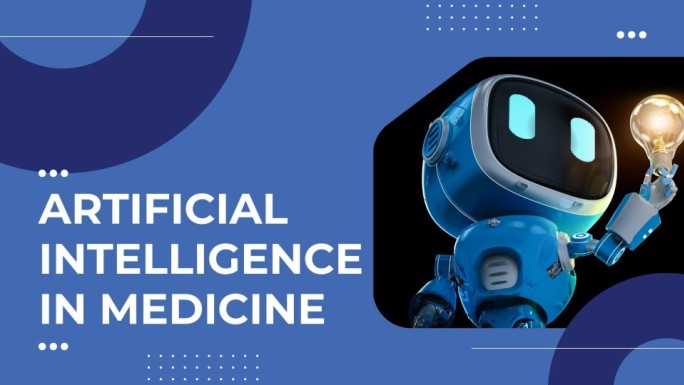What Is Agile Software Development And Why It’s Dominating Other Methodologies
Today’s software development prioritizes speed and efficiency. Developers prefer methodology that allows them to stay flexible and adaptable to the ever-changing market dynamics. That’s why Agile software development is taking the industry by storm. In fact, from just 2020 to 2021, the Agile utility rate doubled, with an impressive 64% success rate to boot!
But what is Agile? Why is it outshining traditional methods like the waterfall model?
In this blog post, we'll break down the basics of the Agile model, unpack its key principles, and explore why so many teams are making the switch. Let's reveal the reasons behind the soaring popularity of Agile software development.
What Is Agile Software Development?
Agile software development is a term that encompasses all approaches to developing software based on the values and principles of the Agile Alliance.

The Agile method takes an iterative and incremental approach to software development, breaking the project into manageable segments called iterations or sprints. Each iteration is a mini project of its own, undergoing all planning, designing, coding, and testing phases. By the end of each iteration, a functional piece of the software is delivered.
This methodology promotes adaptive planning, early delivery, and continuous improvement, allowing the development team to release a functional version of the software regularly.
Four Core Values of the Agile Methodology
According to the Agile Manifesto, the 4 core values of Agile software development are:
- Individuals and interactions over processes and tools
- Working software over comprehensive documentation
- Customer collaboration over contract negotiation
- Responding to change over following a plan
Let’s delve into each of these values:
1. Individuals and Interactions Over Processes and Tools
Agile software development emphasizes the importance of human experience and collaboration. While processes and tools are important, they are secondary to the value of having skilled individuals and effective teamwork. After all, tools are only as effective as the people who wield them.
Establishing relationships and effective communication between developers leads to better problem-solving and innovation. Software development is a creative process, and it benefits from creativity and responsiveness.
2. Working Software Over Comprehensive Documentation
In Agile, delivering functional software is more valuable than producing extensive documentation that can become outdated quickly. The ultimate goal of software development is to deliver products that work and meet customer needs. While documentation is crucial, it should not overshadow the priority of creating software that meets the marks.
3. Customer Collaboration Over Contract Negotiation
The Agile methodology favors constant cooperation with customers over rigid contract terms. Engaging with customers throughout the project leads to a product that better fits their needs and expectations. Customers can reflect on their previous requests and recommend changes according to real-world conditions. Contract negotiations are still important when working with other teams, but should not restrict ongoing dialogue and adjustments.
4. Responding to Change Over Following a Plan
The Agile model recognizes that change is inevitable and that being able to adapt is more beneficial than strictly adhering to a set plan. This is crucial in a fast-evolving market, where companies endorse the ability to pivot based on new information or changing customer needs. While planning remains essential, it should be flexible enough to accommodate changes.
12 Principles of Agile Software Development
The Agile Manifesto not only outlines the core values of Agile software development as well as 12 guiding principles. These principles help teams navigate the complexities of software development while maintaining the flexibility and customer focus that Agile promotes. Let’s explore these principles:
1. Customer Satisfaction Through Early and Continuous Delivery
Deliver working software frequently, with a preference for a shorter timescale. Continuous delivery ensures that customers receive updates and improvements regularly, enhancing satisfaction.
2. Welcome Changing Requirements, Even Late in Development
Agile processes harness change for the customer's competitive advantage. Flexibility in accommodating new requirements ensures the final product aligns well with customer needs, even if those needs evolve.
3. Deliver Working Software Frequently
From a couple of weeks to a couple of months, with a preference for the shorter timescale. Frequent delivery cycles (iterations) ensure continuous improvement and feedback, making the product better with each iteration.
4. Collaboration Between Business Stakeholders and Developers
Business people and developers must work together daily throughout the project. This close collaboration ensures alignment between business goals and technical development.
5. Build Projects Around Motivated Individuals
Give them the environment and support they need and trust them to get the job done. Empowering team members leads to more creativity, ownership, and ultimately, higher quality work.
6. Face-to-Face Conversation
The most efficient and effective method of conveying information to and within a development team is face-to-face conversation. Direct communication minimizes misunderstandings and speeds up decision-making.
7. Working Software is the Primary Measure of Progress
In Agile, the goal is to deliver tangible value as quickly as possible. The primary measure of progress is the actual, functional software that meets the customer's needs.
8. Sustainable Development
Agile processes promote sustainable development. The sponsors, developers, and users should be able to maintain a constant pace indefinitely. This avoids burnout and maintains productivity throughout the project lifecycle.
9. Continuous Attention to Technical Excellence and Good Design
Enhances agility. High-quality design and technical practices ensure that the software remains adaptable and maintainable, supporting long-term project sustainability.
10. Simplicity
The art of maximizing the amount of work not done is essential. Focus on simplicity by avoiding unnecessary features and work, which keeps the project streamlined and manageable.
11. Self-Organizing Teams Produce the Best Architectures, Requirements, and Designs
Allowing teams to self-organize fosters creativity and innovation, leading to better problem-solving and more effective solutions.
12. Reflect and Adjust Regularly
The team regularly reflects on how to become more effective, then tunes and adjusts its behavior accordingly. Continuous improvement is a cornerstone of Agile, making every iteration an opportunity to enhance team processes and productivity.
The Agile Software Development Process
The Agile software development process embraces flexibility and responsiveness. It focuses on delivering functional software quickly and adapting to changing requirements. Here’s an in-depth look into the Agile software development process:
1. Concept and Initiation
Every Agile project starts with a clear understanding of the business needs and objectives. In this phase, high-level planning and initial resource allocation take place to assess the project’s scope and feasibility. Early engagement with key stakeholders, including the product owner, is crucial to capture initial requirements and expectations.
2. Requirements Gathering
Agile shifts away from heavy documentation and instead uses user stories to capture requirements. These user stories describe the functionality from the end-user’s perspective, ensuring the product remains user-focused. Once gathered, these stories are prioritized based on their business value and urgency, forming a product backlog—a dynamic to-do list that guides the development process.
3. Planning
Planning in Agile is dynamic and ongoing. The project is broken down into smaller, manageable iterations known as sprints, typically lasting 1-4 weeks. During sprint planning, the team selects a set of user stories from the product backlog to focus on for the upcoming sprint, forming the sprint backlog.
4. Design and Development
With a clear sprint backlog, the team dives into collaborative design and development. This phase is highly interactive and iterative:
- Daily Stand-Ups: Short, daily meetings help the team stay aligned, discuss progress, and address any roadblocks.
- Pair Programming & Code Reviews: These practices enhance code quality and foster collective ownership.
5. Testing
Testing in Agile is continuous and integrated throughout the development process:
- Automated Testing: Tools are used to run frequent tests, ensuring new code integrates well with existing functionalities.
- Manual Testing: Exploratory and user acceptance testing (UAT) involves real users' being able to validate that the software meets their needs.
6. Review and Retrospective
At the end of each sprint, a sprint review is conducted where the team demonstrates the working software to stakeholders. This is followed by a retrospective, where the team reflects on what went well, what didn’t, and how they can improve in the next sprint.
7. Release and Deployment
Once the software passes all tests and meets stakeholder approval, it's deployed to production. One of Agile’s strengths is the capability to release incremental updates regularly, delivering value to users quickly and frequently.
8. Maintenance and Improvement
Agile is all about continuous improvement. After each release, the team collects feedback from users, which informs the next set of enhancements or features to be added in upcoming sprints. This cycle of feedback and iteration ensures the software continually evolves and improves.
Agile Software Development Life Cycle
The Agile software development life cycle includes 6 key phases that are Concept, Inception, Construction, Release, Production, and Retirement.
1. Concept
In the Concept phase, the initial idea and vision for the project are conceived. The main objective of this phase is to identify the business needs and define the primary goals that will drive the whole project.
Key inputs from stakeholders are gathered to understand the problem or opportunity. From there, the team will conduct a feasibility study to determine the project's viability in terms of resources, time, and budget. A high-level vision document that outlines the scope and objectives provides a clear picture of what needs to be achieved.
2. Inception
The Inception phase lays the groundwork for development. This phase aims to detail the project's requirements and establish a development roadmap.
This involves gathering user stories to capture desired functionalities, developing a prioritized product backlog, and outlining the project timeline, resource allocation, and team roles.
3. Construction
The heart of Agile lies in the Iteration/Construction phase, where development happens in cycles known as sprints. Each sprint involves selecting user stories from the product backlog, designing, coding, and testing features, and conducting daily stand-up meetings to discuss progress and resolve issues. At the end of each sprint, a review and retrospective take place to evaluate the completed work and identify areas for improvement.
4. Release
Once a functional increment is ready, it enters the Release phase. During this phase, detailed deployment plans are prepared, final testing is conducted in a staging environment, and the increment is moved to production. User training and documentation are also provided to ensure a smooth transition.
5. Production
The Production phase ensures that the software remains functional and meets user requirements. Continuous monitoring, bug fixes, updates, and user support are essential activities during this phase to maintain long-term success and satisfaction.
6. Retirement
Finally, the Retirement phase marks the end of the software's lifecycle. During this phase, essential data is migrated to new systems if necessary, stakeholders and users are informed about the retirement plan, and the software is safely decommissioned. This allows resources to be reallocated to current and future projects.
Types of Agile Software Development Methods
Agile software development offers a variety of methodologies suited to different types of projects and team dynamics. These methodologies share core Agile values but differ in their specific approaches to delivering high-quality software. Here’s an overview of some of the most popular Agile software development methods:
Scrum
Scrum is perhaps the most widely adopted Agile methodology. It emphasizes iterative progress through the use of time-boxed sprints, typically lasting 2-4 weeks.
.jpg)
Key roles within Scrum include the Product Owner, who prioritizes the backlog; the Scrum Master, who facilitates the process; and the Development Team, which executes the work.
Scrum involves sprint planning to define goals and tasks for the upcoming sprint, daily Scrum meetings to discuss progress and obstacles, sprint reviews to demonstrate the completed work to stakeholders, and sprint retrospectives to reflect on the sprint and identify improvements.
Kanban
Kanban focuses on visualizing the workflow to maximize efficiency and avoid bottlenecks. Unlike Scrum, Kanban doesn’t use fixed-length iterations. Instead, it emphasizes continuous delivery.
This method employs a visual board where tasks are visualized on a Kanban board divided into columns representing different stages of the workflow. Work in Progress (WIP) limits are set to avoid overloading the team, ensuring tasks are pulled from a backlog and moved through the workflow as soon as they are ready, facilitating continuous delivery.
Extreme Programming
Extreme Programming (XP) focuses on technical excellence and customer satisfaction through practices like Test-Driven Development (TDD), Pair Programming, and Continuous Integration.
XP emphasizes writing tests before code to ensure functionality meets requirements, regular pair programming where two developers work together at one workstation to produce higher quality code, and continuous integration, which involves regularly integrating and testing code to catch issues early.
Lean Software Development
Lean Software Development strives to optimize efficiency by eliminating waste, improving flow, and delivering fast. Originating from Lean manufacturing principles, it focuses on maximizing value and minimizing waste.
Lean Software Development involves removing any process or feature that does not add value to the customer, using iterative development and feedback to continuously improve, and prioritizing speed to market by breaking work into small, manageable pieces.
Crystal
Crystal is a family of methodologies tailored to different team sizes and project complexities. It focuses on people and interactions over processes and tools. This human-centric approach emphasizes the importance of communication, ensures regular delivery of working software, and encourages teams to reflect and adapt their process regularly.
Feature-Driven Development
Feature-Driven Development (FDD) is a model-driven, iterative approach focused on delivering tangible, working features every two weeks. FDD involves creating a comprehensive list of features prioritized by business value, building a model of the domain to guide development, and designing and building by feature to ensure continuous progress.
Agile Methodology Essential Glossary
Agile Methodology is rich with terminology that helps shape its principles, practices, and workflow. Here’s a comprehensive glossary of key terms you’ll encounter in the world of Agile:
- Agile: A dynamic and cooperative approach to software development that prioritizes flexibility, adaptability, and close collaboration with customers.
- Backlog: A prioritized list of work items. It can be divided into two types: Product Backlog and Sprint Backlog.
- Burndown Chart: A graphical representation of work left to do versus time. It is used to track the progress of a sprint or project.
- Continuous Integration (CI): A practice where developers frequently merge code changes into a shared repository, followed by automated builds and tests to catch issues early.
- Continuous Deployment (CD): An extension of Continuous Integration where code changes are automatically deployed to production environments after passing all tests.
- Daily Stand-up (Daily Scrum): A short, daily meeting where team members discuss what they did yesterday, what they plan to do today, and any obstacles they face.
- Definition of Done (DoD): A clear checklist of criteria that a piece of work must meet to be considered complete, ensuring consistency and quality across the team.
- Epic: A large user story that can be broken down into smaller stories for execution in future sprints.
- Feature: A distinct functionality that provides value to the user or the business.
- Increment: A fully operational and potentially shippable piece of software resulting from a sprint.
- Iteration: Another term for sprint, typically referring to a time-boxed period during which specific backlog items are developed. Sprints usually last from 1 to 4 weeks.
- Kanban Board: A tool used in Kanban to visualize tasks and their states in the workflow, usually divided into columns representing different stages.
- Product Owner: The person responsible for maximizing the product's value by managing the product backlog and ensuring the development team understands the priorities and requirements.
- Scrum Master: The facilitator for the Scrum process, responsible for ensuring the team follows Agile practices and removing impediments.
- Sprint Planning: A meeting at the start of each sprint where the team selects backlog items to work on and plans the tasks needed to complete them.
- Sprint Retrospective: A meeting after the sprint review where the team reflects on the sprint to discuss what went well, what didn’t, and how processes can be improved.
- Story Point: A unit of measure used in Agile to estimate the effort required to implement a user story, considering complexity, risk, and time.
- Task: A single unit of work that contributes to completing a user story in the sprint backlog. Tasks are more granular and specific than user stories.
- Test-Driven Development (TDD): A development practice where you write tests before coding the functionality they are meant to validate, ensuring requirements are met from the outset.
- Velocity: A measure of the amount of work a team can complete in a sprint, usually quantified in story points or hours. It helps forecast and plan future sprints.
Advantages and Disadvantages of Agile Software Development
The Agile approach to software development offers numerous benefits. However, it also poses unique challenges. Let’s go over some of the pros and cons of the Agile methodology.
Advantages of Agile Software Development
- Flexibility and Adaptability: One of Agile's greatest strengths is its adaptability. The iterative nature of Agile allows teams to respond to changes in requirements, technology, and market conditions quickly and efficiently.
- Improved Customer Satisfaction: Agile focuses on customer collaboration. Regularly scheduled reviews and feedback loops ensure that the final product more closely aligns with customer expectations and needs.
- Faster Time to Market: By delivering small, workable product increments in short sprints or iterations, Agile teams can bring parts of the product to market more quickly. This helps organizations gain a competitive edge and start generating value early.
- Enhanced Product Quality: Agile practices like Continuous Integration (CI), daily stand-ups, and Test-Driven Development (TDD) contribute to higher software quality. Bugs are identified and fixed quickly, and code quality is continuously maintained.
- Risk Mitigation: The iterative delivery model allows teams to identify and address risks early in the development cycle. Frequent testing, reviews, and feedback loops help mitigate potential issues before they become significant problems.
- Better Team Collaboration: Agile fosters a collaborative environment where team members communicate regularly through various meetings and collaborative tools. This leads to better coordination, higher morale, and a more cohesive team.
- Increased Transparency: Agile’s transparent processes and frameworks (like Scrum boards and burndown charts) offer clear visibility into project progress, allowing stakeholders to stay informed and engaged.
Disadvantages of Agile Software Development
- Risk of Scope Creep: Agile's flexibility can sometimes lead to scope creep, where continuous changes and additions extend the project timeline and stretch resources.
- Incomplete Documentation: Agile prioritizes working software over comprehensive documentation. This can result in insufficient documentation, making future maintenance and onboarding of new team members challenging.
- Experience Reliance: Agile methodologies rely heavily on the skills and expertise of the team members. Inexperienced teams may struggle to adapt to Agile practices, resulting in inefficiencies and potential failures.
- Potential Overhead: The frequent planning, review, and retrospective meetings required by Agile can introduce overhead, which might consume a significant portion of the team's time that could otherwise be spent on development.
- Dependency on Strong Leadership: Effective Agile implementation requires strong leadership roles, such as the Scrum Master and Product Owner, to guide the process and resolve impediments. Lack of effective leadership can hinder Agile adoption and success.
Why Teams are Choosing Agile Software Development over Traditional Methods?
The shift from traditional software development methodologies, like Waterfall, to Agile has been profound over the past few years. Teams are quickly pivoting to Agile to meet the evolving demands of modern software development.
Here’s a look at the reasons behind Agile’s rise to prominence:
1. It Promotes Adaptability
Traditional approaches like the Waterfall model are linear and rigid. Accommodating changes in requirements is difficult and costly once the project is underway.
In contrast, Agile's iterative and incremental approach allows teams to remain flexible and adapt to changes quickly. This means Agile teams can pivot and adjust their course without derailing the project.
2. It Promises Faster Time to Market
In a traditional development model, the entire product is developed in one go. It might take months or years before any part of the software sees the light of day.
Agile promotes the quick delivery of workable software increments at the end of each iteration, typically ranging from one to four weeks. This faster time to market means that teams can start benefiting from the new features much earlier, giving businesses a competitive edge and allowing for quicker realization of ROI.
3. It Improves Customer Collaboration and Satisfaction
Agile places a strong emphasis on customer collaboration throughout the development process. In traditional models, customer involvement is often limited to requirements gathering and the final review, leading to a higher risk of misaligned expectations.
.jpg)
Agile, on the other hand, involves customers and stakeholders in regular reviews, demos, and feedback sessions. This continuous interaction ensures that the product aligns closely with the customer's needs and provides an opportunity to make adjustments based on feedback, leading to improved customer satisfaction.
4. It Controls Risks
Traditional methods are prone to high risks because problems often emerge late in the project lifecycle when they are costlier and more difficult to address. Agile’s iterative approach allows teams to identify and mitigate risks early and continuously. This significantly reduces the cost of software development.
Regular feedback loops, sprint reviews, and retrospectives help in addressing potential issues before they escalate, ensuring a more controlled and lower-risk development process.
5. It Focuses on Delivering Value
Traditional methods often focus on completing tasks and milestones, sometimes at the expense of delivering real value to the customer.
Agile prioritizes work based on the value it delivers. By continuously refining and reprioritizing the product backlog, teams ensure they are always working on features and tasks that provide the most significant benefit to users and stakeholders.
Is Agile Software Development the Right Choice for Your Project?
Agile methodologies offer numerous benefits, but they are not a one-size-fits-all solution. Choosing to adopt Agile depends on various factors such as project type, team dynamics, and organizational needs.
Agile software development will be most effective if you have:
1. Dynamic Projects with Evolving Requirements
If your project’s requirements are likely to change frequently due to evolving customer needs, market conditions, or technological advancements, Agile is well-suited to manage such fluid scenarios. Agile's iterative and flexible approach allows for continuous refinement and adaptation, ensuring that the product remains relevant as requirements evolve.
2. A Need for Frequent Customer Collaboration
Agile methodologies thrive on continuous customer interaction and feedback. If your project involves significant stakeholder engagement and requires regular input to steer the direction of the development, Agile's emphasis on collaboration will help ensure the final product meets user expectations. Regular reviews and demo sessions allow for real-time adjustments based on feedback.
3. A Desire for Faster Market Entry
When there is a need to deliver value quickly and frequently, Agile’s iterative cycles facilitate the release of functional product increments in short intervals (sprints). This ensures that valuable features reach the market sooner, providing early returns on investment and allowing companies to capture market opportunities.
4. Experienced, Self-Organizing Teams
Agile methodologies rely heavily on the competence and collaboration of self-organizing teams. If your team members are experienced, capable of autonomous decision-making, and excel in communication and problem-solving, they will thrive in an Agile environment. A team that is proficient in all programming languages and self-sufficient will decide your success.
5. Innovative and Experimental Initiatives
Projects that focus on innovation and experimentation benefit from Agile's flexibility to test new ideas, gather insights, and iterate rapidly. Agile methodologies support a fail-fast approach, where teams can quickly learn from mistakes and successes, fostering a culture of innovation.
Wrapping Up!
Agile software development has fundamentally transformed the way teams approach and execute projects in today’s fast-paced, ever-changing landscape. It embraces flexibility, and close collaboration with customers to deliver incremental value through iterative cycles.
However, it’s important to recognize that Agile is not a one-size-fits-all solution. Successful implementation requires experienced, self-organizing teams, a culture of collaboration and transparency, and an environment open to ongoing feedback and adaptation. For projects characterized by dynamic requirements, high complexity, and a need for rapid delivery and customer engagement, Agile can significantly enhance project outcomes and customer satisfaction.





